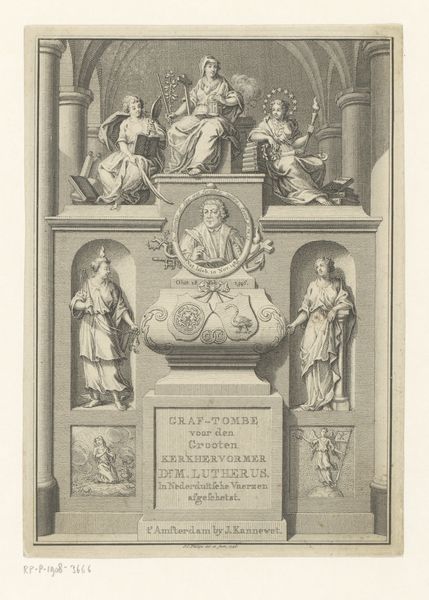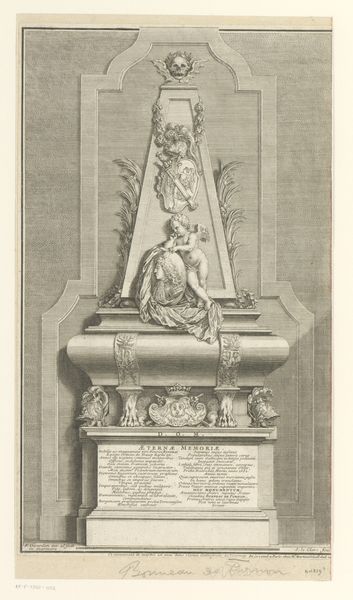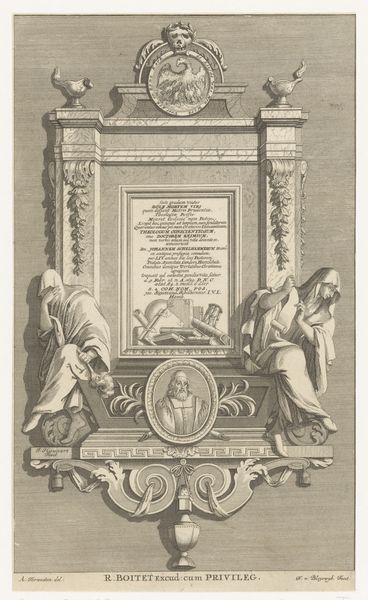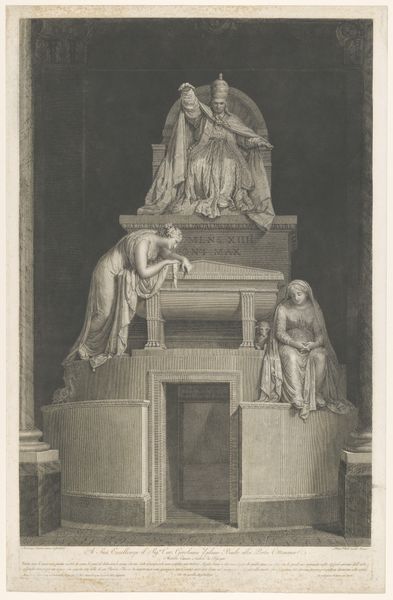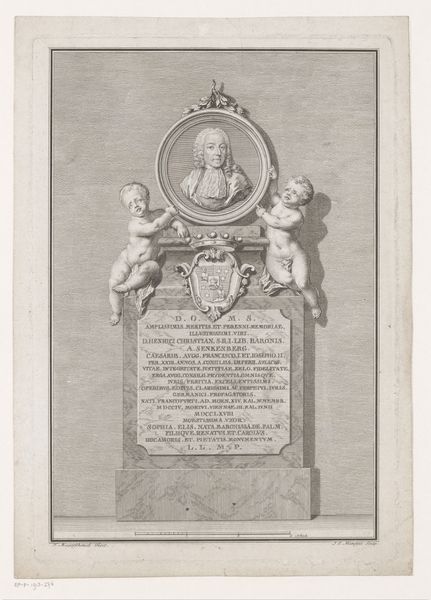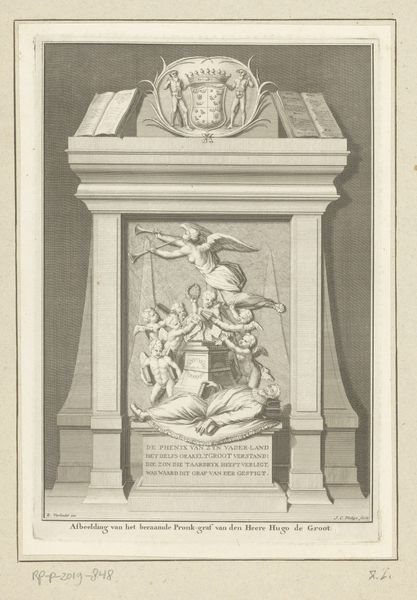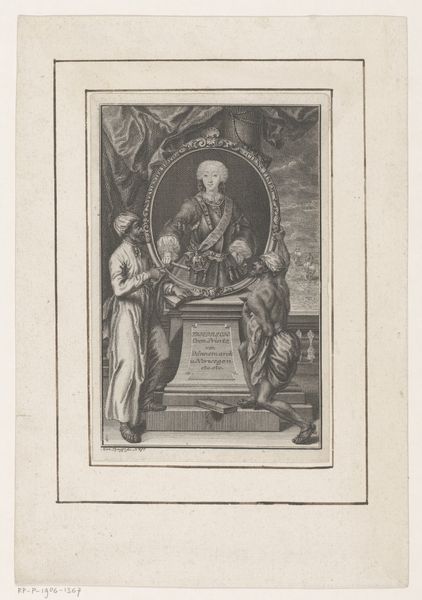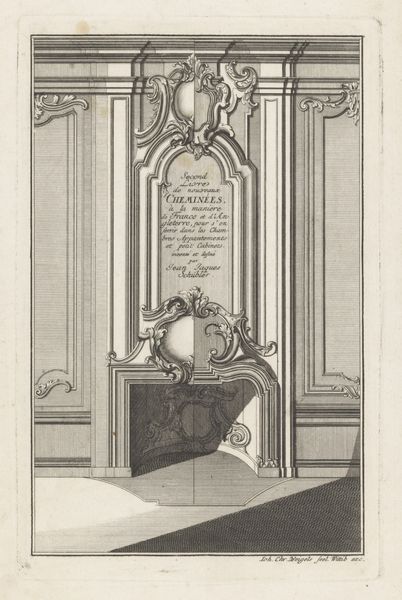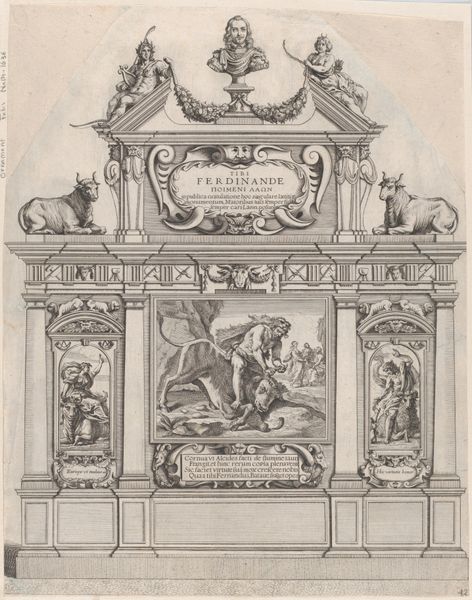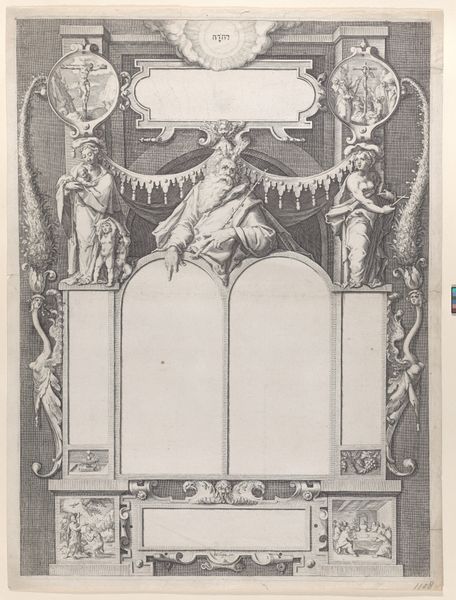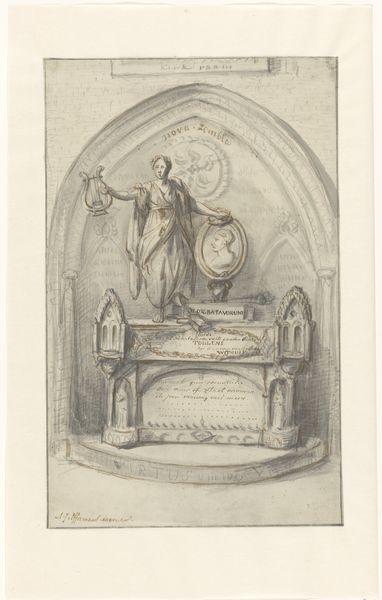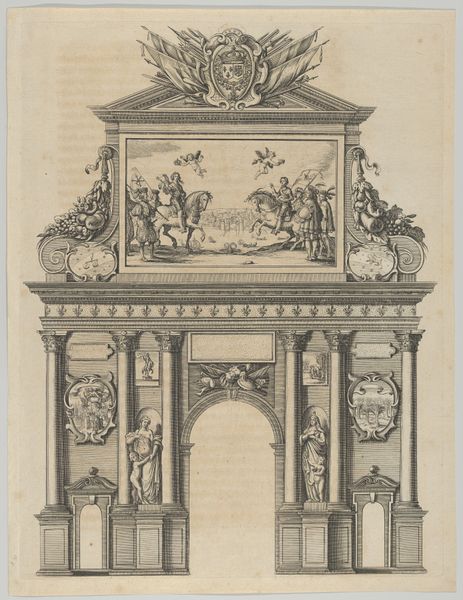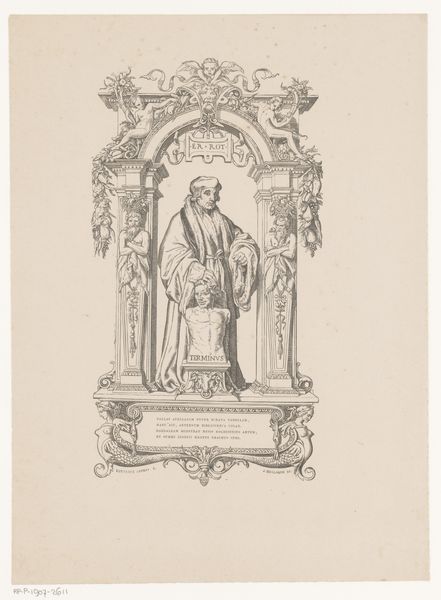
print, relief, engraving
#
portrait
#
baroque
# print
#
sculpture
#
relief
#
figuration
#
form
#
history-painting
#
engraving
Dimensions: height 454 mm, width 329 mm
Copyright: Rijks Museum: Open Domain
Curator: This print depicts the tomb of François de La Rochefoucauld. Created between 1645 and 1677, it's currently housed at the Rijksmuseum. Editor: It's incredibly detailed. I’m immediately drawn to the tiered construction—it suggests a grand, material statement. There's something quite assertive in the way the whole monument dominates the space. Curator: Absolutely. The baroque style emphasizes the performative aspects of mourning and commemoration. Look at the two figures flanking the top: these aren't just decorations, but represent allegories and embody complex concepts, connecting the tomb to broader philosophical and religious ideas of the time. We need to think about whose stories are told, and who gets memorialized. Editor: I'm also thinking about the actual labor and the skill involved in crafting the physical tomb that this print depicts. Who were the sculptors, the stone masons involved in building this elaborate structure? This engraving presents us with the end product, a lavish memorial, but it conceals the human toil and the materiality behind its creation. How did these artisans shape and manipulate stone? Curator: The act of translating the original physical tomb into a printed image allows us to think about its circulation and accessibility, both then and now. Who was the print intended for, what did it mean to distribute representations of elite memorials in this way? Was this about piety, politics, or perhaps something more closely linked to solidifying particular class structures and hierarchies? Editor: It strikes me that printmaking democratizes to a degree – makes visible to more eyes what once could only be seen if you visited the specific space of that Genevieve abbey. Curator: Precisely! That speaks volumes about evolving social and visual cultures, allowing us to see how narratives of power and privilege were disseminated and consumed through different material forms. It is so interesting to view today through a post-colonial lens! Editor: Agreed, looking at this image compels us to acknowledge and understand the intricate networks of labor and privilege intertwined within artistic creation and consumption in seventeenth century Europe. Curator: It pushes us to critically examine these historical modes of representation and grapple with the complex legacies they carry. Editor: And it gives weight to our appreciation for craftsmanship involved at all phases of production, in sculpture as much as engraving.
Comments
No comments
Be the first to comment and join the conversation on the ultimate creative platform.
